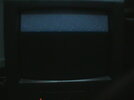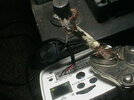Sorry for the edits!However, per some of the edits you added after I started writing this
I had found the diameter of the gold atom, but then came across conflicting information about the number of atoms in a specific layer thickness.
So I stopped short of suggesting what the area would be at 23 atoms thick.
...then I went back to first principles!
Using Avogadro's constant, 1cm³ of gold would have 5.91x10^22 atoms.
...cube rooted = 38'951'946 atoms per side.
...at suggested 23 atoms thick, that would be 1'693'562 cm² slices.
...19.32g (1cm³ of gold) = 169m² at 23 atoms thick.
...8.75m²/g
...Troy ounce = 31.103g
...the area of one Troy ounce of gold at 23 atoms thick = 272m²
...well, that's my guess anyway!



